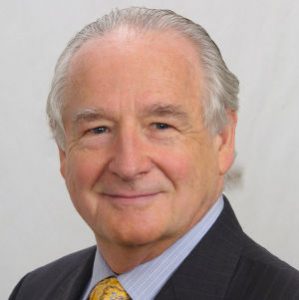 Back in the old days, a business could hum along for years, even decades, with little or no need to change anything about the way it operated. That’s no longer the case. If a business can’t transform itself virtually overnight, it’s history. Look at how Netflix drove Blockbuster out of business — this is the kind of disruption that’s here to stay.
Back in the old days, a business could hum along for years, even decades, with little or no need to change anything about the way it operated. That’s no longer the case. If a business can’t transform itself virtually overnight, it’s history. Look at how Netflix drove Blockbuster out of business — this is the kind of disruption that’s here to stay.
Now business leaders are saying things like, “Culture is so important. Having the right values is essential. If we don’t have a clear purpose that’s exciting, people are not going to want to commit their time and energy to working here.”
So how do organizations transform themselves in order to keep up?
I had a chance to explore this question with systems consultant Roland Sullivan, whose company, Sullivan Transformation Agents, leads change efforts at organizations all over the world. Roland was a guest on my radio show, iLead: The Leadership Connection, which was broadcast from Facebook headquarters in Silicon Valley during my recent visit.
“The old incremental kind of change isn’t fast enough,” Roland told me. “Companies that figure out how to transform their culture dramatically are the ones that are going to soar onward and upward.”
The most important determinant of successful change, Roland believes, is that leadership must “walk the talk.”
“That top person has got to want to change their mindset and their behavior,” he said. “Because the whole organization is looking at them and their top team, and if they’re not serious, it’s not going to happen.”
How do we hold leaders accountable?
We’ve all seen instances where leadership says one thing, but does another. How can organizations make sure leadership is really setting the standard?
“We document every commitment and action that every executive is going to give and do,” Roland said. “And then an internal person comes in and holds their feet to the fire.” The best way to ensure accountability, Roland said, is to hold frequent face-to face meetings.
It might seem that technology has made such meetings unnecessary, but nothing could be further from the truth. Meeting in person is the only way to build understanding, trust, and honesty. “People can do all of the exciting virtual online communication and so forth, but something happens when people are eye to eye. What goes on is a real catharsis.”
Five truths about change
In talking with the most competent large-group facilitators from all over the world, Roland has identified five critical elements of transformation within an organization.
Change one thing, change everything. Transformation connects all things, so a change in one part of the system will necessarily affect the total.
Purpose is key. “Transformation is clearly purposeful. The purpose is created at the top, but oftentimes it changes when the whole system’s truth comes out and the system turns out to be smarter than the CEO.”
It’s a journey. “The main reason change processes fail is that people don’t stay at it,” Roland said. “People need to continually learn from what they’re doing, to get feedback about what’s going on, and there needs to be commitment for it to go long term.”
You’ve got to have a theory. “Some of the theories of organizational development from the 60s and 70s, about empowerment, engagement, group dynamics and feedback, are still relevant today,” Roland said. “You have to have a good theory or transformation won’t happen.”
It’s all about values. “Young people want to have something beyond money. They want to help the world. When you touch the hearts of people is when they start becoming effective and high-performing.”
Leadership is just the beginning
The choice of an internal team can make or break the success of a transformation, Roland believes. “They have to be trusted,” he said. “They have to be willing to model change themselves, and they need to be willing to go off and get an education. It can’t really be the person who wears the HR hat, because when the organization sees an HR person coming down the hall they think of ‘compliance.’ Instead, it needs to be someone who can be totally open and objective to every part of the system, but always highly supportive of the top person.”
Once the top team has committed to transformation, there’s still work left to be done: change has to be communicated throughout the company so that all are on the same page. “You need to engage everyone,” Roland said. “You’ve got to use social media, the internal Facebook, to keep everybody in touch with each other.
“Cascading doesn’t work. Somehow you’ve got to involve and engage the hearts of people throughout the entire system.”
Finally, transformation needs to be followed up with feedback. “We’ve got to continue to research the action that’s going on in the organization and use that data to help us learn and go forward,” Roland said.
HR’s role in the process
As Roland mentioned before, the human resources department is frequently conflicted about change, because HR is an area that traditionally deals with compliance. Is there a way HR can help create a sustainable culture and nurture talent?
“I think HR’s job is to help the human spirit flourish, so we can increase innovative productivity,” he told me. “Clients need to know the difference: are they working with HR or OD (organizational development)? There needs to be a re-visitation of what it means to deal with the needs of both talent and change. We have to drop the tension between OD and HR, and they need to get hand in hand and collaborate.”




